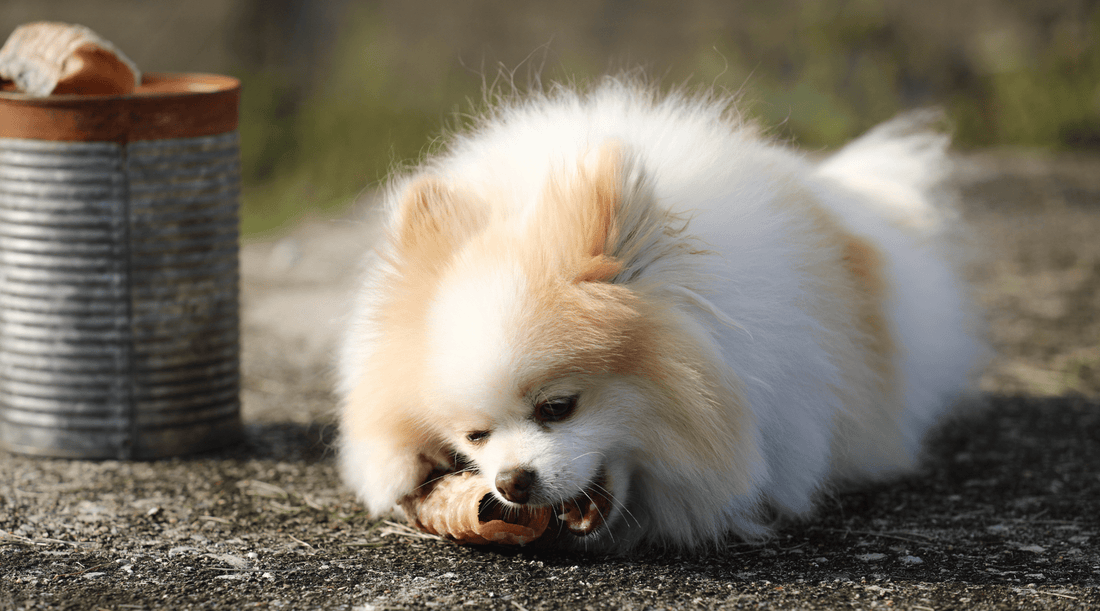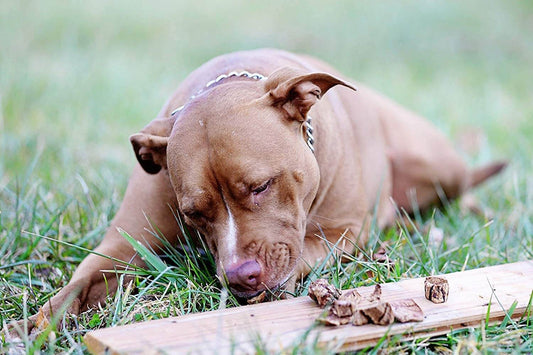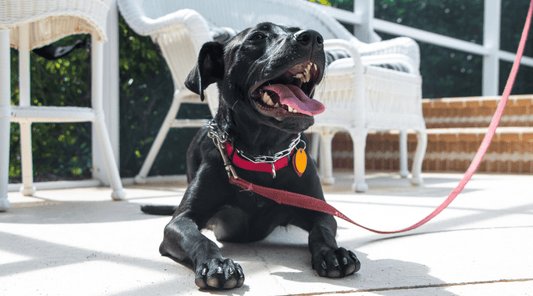
Fiber for Dogs: How to Safely Use Dog Treats for Digestion
Dawn Miller Feb 05, 20254 Minute ReadDogs eat meat in nature, right? Do dogs need fiber? I hear this a lot when it comes to dog gut health. There's a misconception that my dog's wild ancestors were exclusive carnivores.
Bring on the mental images of wolves taking down a deer. But this vision only represents a part of a wolf's diet, and this misunderstanding could be causing dogs' digestive issues.
Last weekend, my partner and I met up with some friends at a local steakhouse. And the topic of doggie bags came up as we were preparing to leave. Could dogs eat that leftover asparagus, baked potato, or trimmings from that juicy steak?
While salty restaurant food is probably not the best for dog gut health, this did raise some interesting questions about fiber for dogs.
Do Dogs Need Fiber?
In the wild, wolves and their kin eat grass, grains, berries, fruits and vegetables, root vegetables and the partially digested contents of their mostly herbivore prey. As scavengers, wild dogs often eat fermented food from human communities or fruits that have fallen off the tree, promoting a healthy gut microbiome.
They're not vegetarian by any means. Most of their diet consists of meat, internal organs, connective tissues, bones, and bone marrow.
But just like us, dogs benefit from a well-rounded diet that includes fiber. Fiber is vital because it:
- Supports Digestion - Fiber regulates bowel movements by adding bulk and absorbing water, making it easier for your dog to pass stool.
- Promotes Gut Health - Fiber feeds the good bacteria in your dog’s gut, supporting a balanced microbiome and reducing the risk of digestive issues.
- Manages Weight - High-fiber foods can help your dog feel full longer, making it easier to maintain a healthy weight.
- Controls Blood Sugar Levels - Fiber slows the absorption of sugar, which can be beneficial for dogs prone to diabetes.
In short, fiber is a multi-tasking nutrient dogs need. And here's the thing. Kibble isn't fiber-sufficient. Sure, it contains some whole grains like rice, rye, corn, oats, and wheat. But these are relatively low fiber compared to the more fibrous plants dogs eat in the wild.
Signs Your Dog May Need More Fiber
Look for these common red flags that tell you your K9 needs more fiber for dogs.
- Irregular bowel movements (constipation or diarrhea)
- Excessive gas
- Frequent scooting (could indicate anal gland issues)
- Unexplained weight gain
- A dull or brittle coat
One of the first things to do when you see these signs is to evaluate your dog's diet.
High Fiber Dog Treats and Natural Sources
You don't have to feed your dog a gloppy fiber drink. And they don't need a ton of fiber because they're not vegetarians.
Many human foods are dog-safe and amazing for dogs with digestive issues—not only because of the fiber but also because of other nutrients kibble lacks.
These can include free-radical-fighting antioxidants, collagen, glucosamine, vitamins C, A, and E, and in some cases, healthy fats, such as omega 3 and 6—all vital for dog health.
Let's look at some of the fiber-rich foods you can feed your dog.
- Pumpkin and Butternut Squash are similar in nutrition, taste, and benefits. They're so similar, in fact, that US manufacturers can legally sell canned butternut and call them pumpkin. Pumpkin is a well-known digestive aid rich in both soluble and insoluble fiber. Just a few spoonfuls of plain, unsweetened pumpkin/squash delivers substantial fiber. Pumpkin is also rich in anti-inflammatory antioxidants.
- Sweet Potatoes (with skin) are tasty root vegetables that are high in fiber but also packed with vitamins, minerals, and anti-inflammatory antioxidants. Roast and dice them to make your own dog treats for digestion.
- Oats aren't exceptionally high in fiber when served as oatmeal—mostly water. But when the whole grains are soaked overnight in a more nutritious semi-liquid like plain Greek yogurt, natural peanut butter, or bone broth, dogs get fiber, probiotics, and nutrition.
- Trachea Chews may surprise you. Doesn't fiber only come from plants? Yes and no. Beef trachea chews are rich in collagen, a fibrous structural protein that makes up the lining of a dog's digestive tract. It's also the foundation of healthy skin, coat bones, and joints. So, this is one critical fiber for dogs.
Trachea chews are single-ingredient, high-fiber dog treats and are a clear favorite in my house. Not only do they support digestion. They also provide natural glucosamine for joint health. They even have some omega 3 and 6 for good measure, if you buy grass-fed.
Some more dog-friendly antioxidant and fiber-rich foods that deserve honorable mentions include:
- Berries
- Apples (with peel)
- Green beans (fresh, not canned)
- Asparagus (cooked only to help break down some of the fiber)
How to Add Fiber to Your Dog’s Diet
It's important not to overwhelm your dog with fiber. Anyone who suddenly started eating more beans and whole grains knows why that's a bad idea.
1. Start Slowly
Dogs don't need as much fiber as humans. And overloading them could have the opposite effect—as in a blockage. Begin with small amounts of high-fiber foods or treats and gradually increase over time.
2. Mix It In
To familiarize your dog with fresh or cooked produce, chop and mix it with regular food or food with water. Try topping food with a dollop of pumpkin or roasted sweet potato.
3. Refill Empty Dog Bones and Tubes with High Fiber Dog Treats
You can get more chew time out of dog bones after the beef bone marrow is mostly gone. Refill them with peanut butter, pumpkin puree, or plain yogurt. Mix it with smaller fibrous foods like berries, apple chunks, chopped asparagus, or green beans.
You can even try beef lung bites in there for some extra protein.
Those trachea chews I mentioned earlier are tube-shaped. So you can fill them with them, too! Now, your dog can get collagen fiber and plant fiber in one tasty treat.
4. Add Fiber to the Training Routine
Make a high collagen fiber dog treat like beef trachea your go-to post-dog training treat and reap the rewards of a well-trained pup.
In moderation, pre-portioned green beans (raw or cooked from fresh/frozen), small apple chunks, and even a dab of pumpkin can become a rewarding training treat.
To learn more about positive reinforcement training with high-value treats, check out this Free 7-Day Dog Training Challenge.
5. Monitor Results
Anytime you change your dog's diet even slightly, you should watch their digestion habits and adjust. Loose stools, gas, or vomiting could signal you're moving too fast.
Avoiding Common Pitfalls
Don't think dogs can eat anything humans can. Learn about forbidden foods like avocado, macadamia, onions, garlic, xylitol, chocolate, and high-sodium foods, as well as sugary foods like dessert yogurt (which is most yogurt) or fake peanut butter.
Do dogs need fiber? Yes. But not with these foods.
Also, don't overdo it. Fiber is a smaller percentage of a dog's diet than a human's. They need mostly kibble with regular chew sessions on a meaty beef marrow dog bone or trachea tube. So, for better dog health, give your dog a bone!
Available On:





